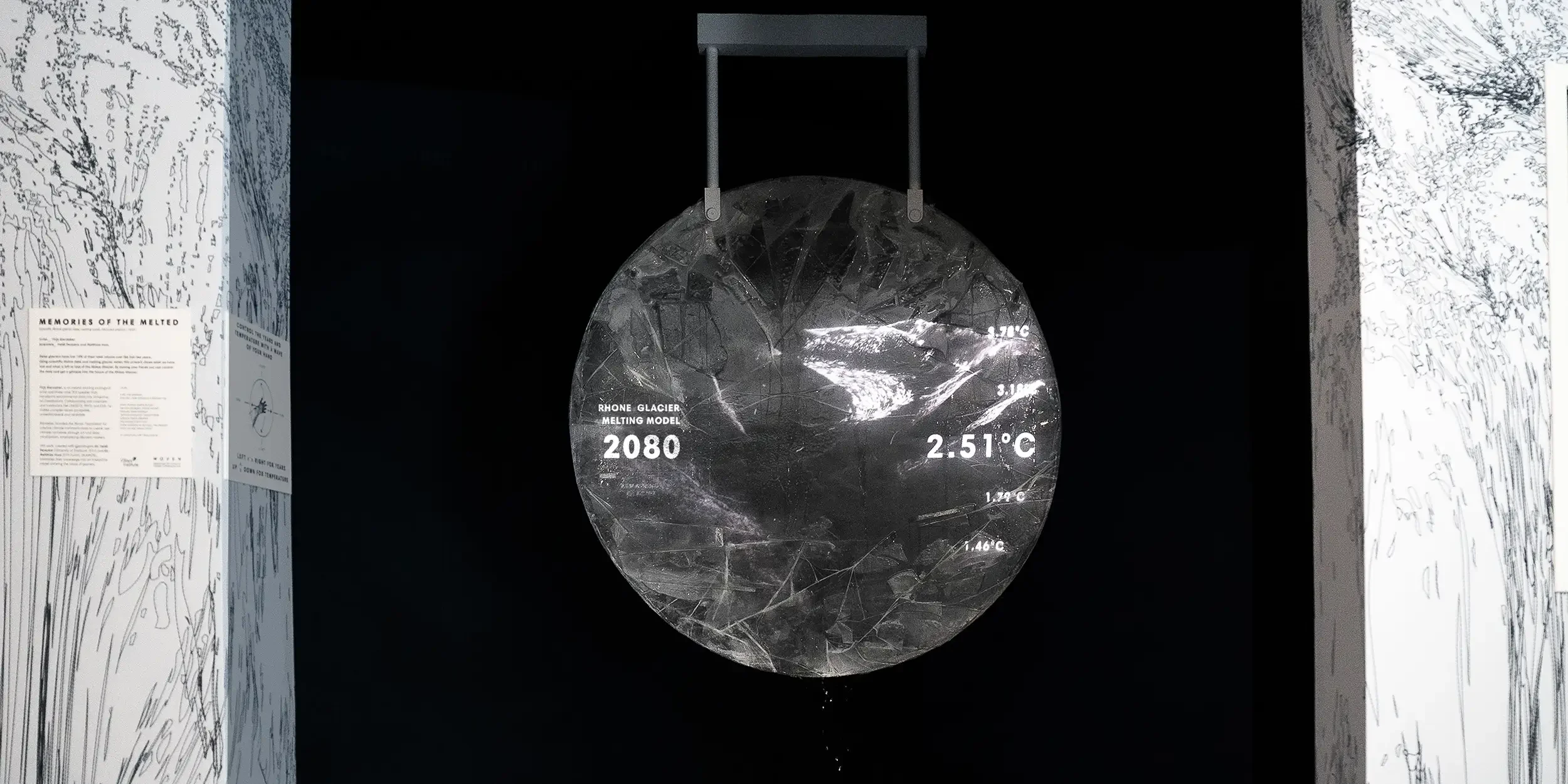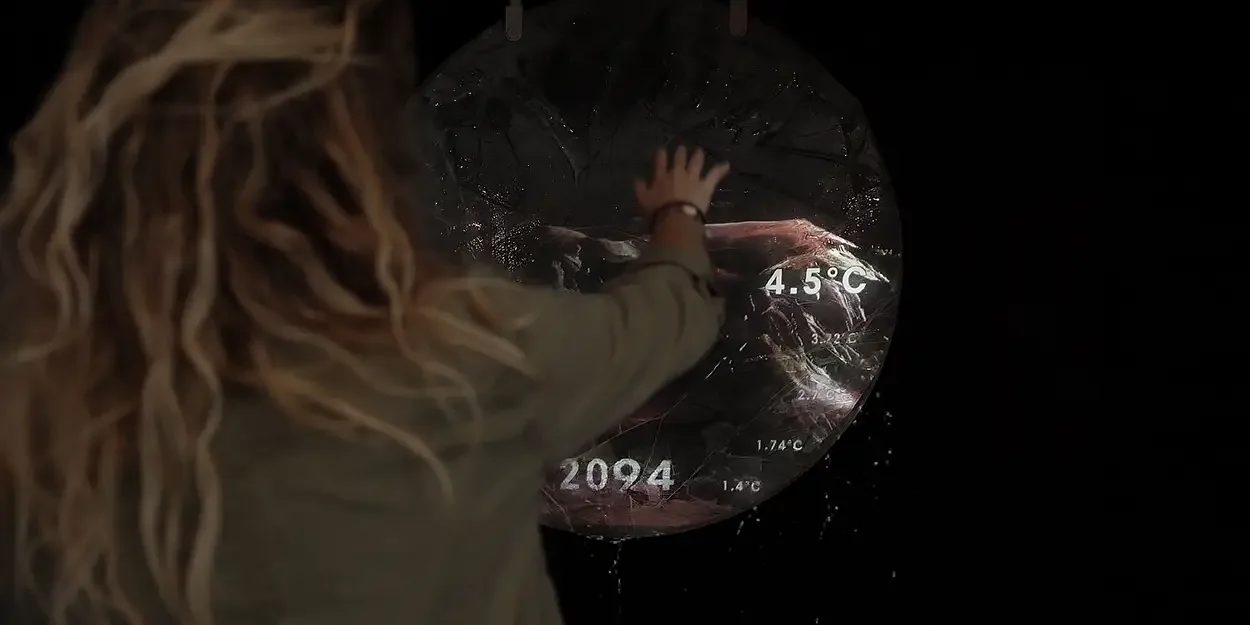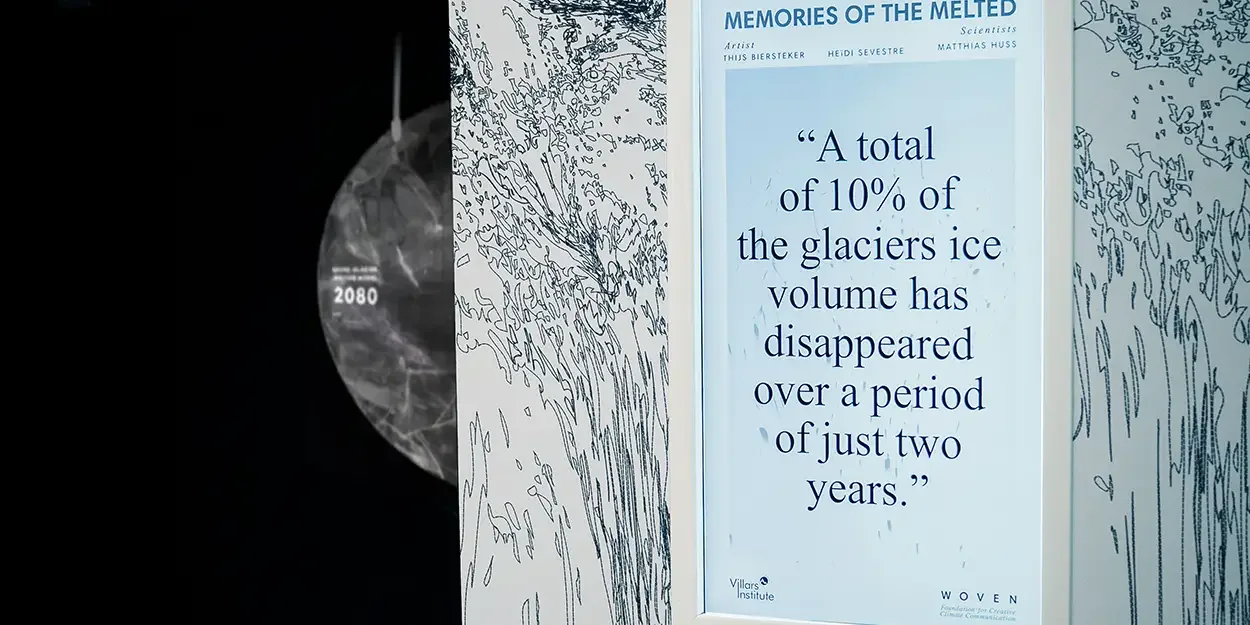An artist and three-time TED speaker is on a mission to change the narrative around how we respond to the enormity of the climate and biodiversity crisis.
In his latest work, Memories of the Melted, Thijs Biersteker collaborated with Heïdi Sevestre and Matthias Huss, the most prominent glaciologists in Switzerland, to turn scientific climate data into an art piece that clearly shows we are at a tipping point. This is an alchemy designed to make the environmental crisis tangible, relatable and emotional. Or as Sevestre says: “Our future hinges on the health of our glaciers, which is directly shaped by the choices we make today.” Added Huss, “Glaciers are the ambassadors of climate change. Visualising their rapid decline using art is a fantastic way to bring a strong message across to the crowd.”
The piece was displayed at the Villars Institute Spotlight Studio during the Montreux Jazz Festival, before it went on to create awareness around the world with local data inputted in each location to show the local environmental situation.
Going beyond our intellectual response and plugging into our emotions is something the Dutch artist believes is essential (and scientists agree) if we are to stop seeing the climate crisis as something ‘outside us’. Says Biersteker, who also founded the Woven Foundation for creative climate communication, “I believe that when science and art combine, they can bring change. When you combine the facts and the emotion, that’s the moment that change is ignited.”
Watch Thijs explain how science and art can together bring change by reconciling facts and emotion.
His installations have covered challenges from air pollution and plastics to biodiversity loss and the relationship between the digital age and its rapacious energy demands. And this powerful new work, created in collaboration with the Villars Institute for this year’s 58th Montreux Jazz Festival, has given us a glimpse of the reality of our melting glaciers as a cold, sharp shock in a rapidly heating world.
Biersteker’s own environmental awareness was ignited when, as a surfer, he was horrified at the waste plastic he saw littering the water, leading to an artwork of interactive pieces of ocean plastic. Since then, he has collaborated with the world's biggest institutions such as UNESCO and others to give their research reach. His mission is to create greater awareness using a unique range of disciplines in the hope of telling new stories to inspire change.
It’s a vision for a more sustainable future that resonates with that of the Villars Institute, whose executive director Lee Howell first met Biersteker at a conference in Dubai in 2022. In discussing the intersection between and the potential fusion of art and science, it seemed a natural progression to collaborate on a piece that could drive home the themes of responsibility, sustainability and the importance of collaboration.
Says Howell, “Artists and scientists both speak truth to power. Thijs brings those two voices together and that’s really powerful. When I look at Thijs, I see someone who is able to combine the forces of the two and apply them to the most important issue of the modern age, the health and future of the planet.”
The iconography – and reality – of the world’s melting glaciers is particularly poignant in both Villars and Montreux, both of which sit on the water below ancient sheets of ice.
The initial idea for Memories of the Melted came when Biersteker read a report that showed that Swiss glaciers have lost 10 percent of their volume in just two years.
Biersteker brings climate data to life with an interactive, real-time model based on Switzerland’s environment. Spectators can control the piece with simple hand movements – swiping through years or raising the temperature with a wave – making the data tangible and immediate and turning the philosophical and abstract into a visceral gut punch that calls for action. The artwork combines the latest technologies, including AI, and Real-Time Image generation to bring to life the melting data and the future that might await us.
Like his other works, Memories of the Melted works to extend the reach of research and findings to audiences, creating a new generation of science communication that can both engage the masses and empower decision makers and scientists. Says Biersteker, “Scientists want to show complexity, and I want to make the complex as compelling as possible.”
It’s this alchemy that can transform what he calls the “Imagination gap”, something he describes in his 2022 TED talk as a response to the now overwhelming nature of climate change. The unimaginable, he notes, becomes the unactionable - but art can help us to imagine how every move and every choice we make is reflected in our environment.
Biersteker also notes that today we look to data, not our own eyes, to tell us what is going on in our world. By combining data with art, he repositions our gaze back to the tangible and makes it possible for us to see anew and with unmistakable clarity.
With 2025 declared as the International Year of Glaciers’ Preservation, Thijs hopes this new work demonstrates that there is still hope, and that by putting the power in our hands, people really can make a difference when they engage fully on every level.





